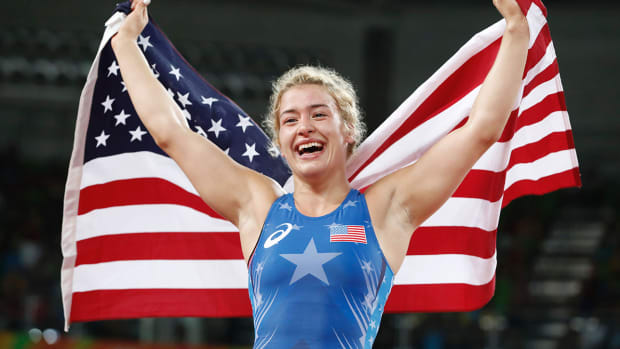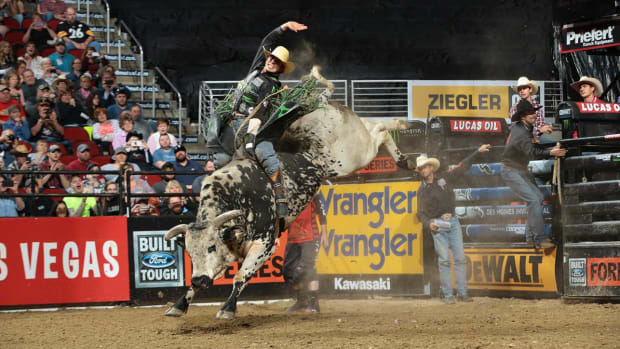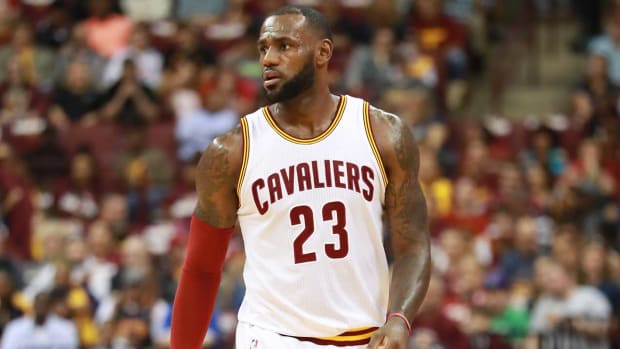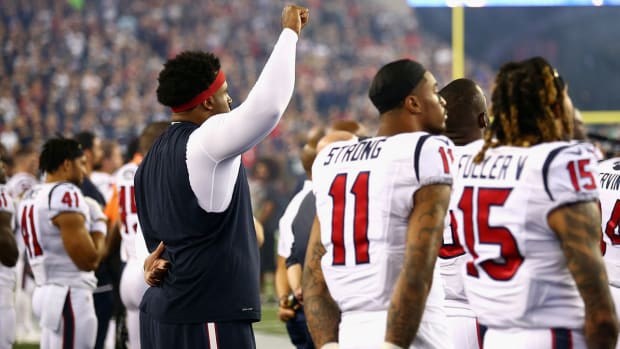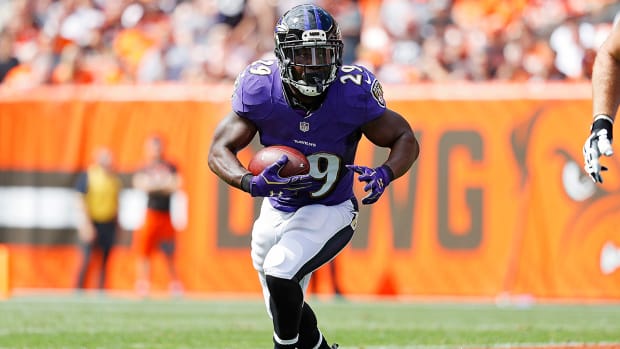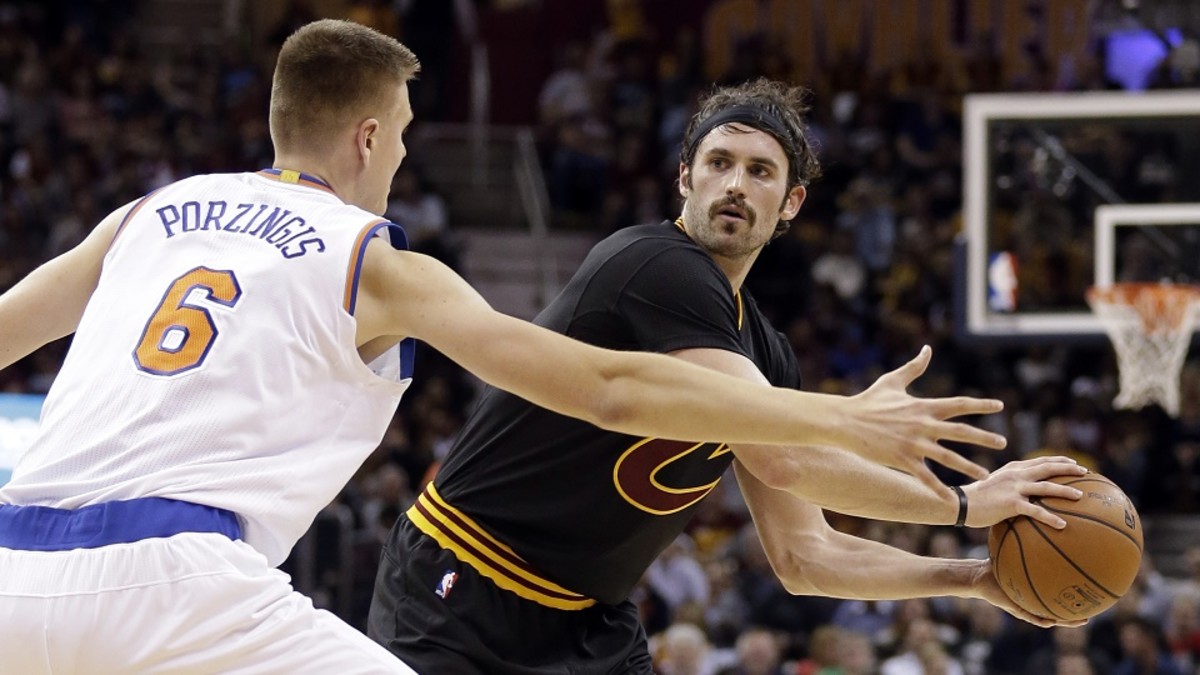
As promised by LeBron James, Kevin Love is the Cavaliers' centerpiece
When LeBron James told assembled media at the start of the season that Kevin Love would be the “main focus” of the Cleveland Cavaliers’ offense this year, observers had more than one reason to be skeptical.
After all, James is his generation’s best player — a guy who’s never been anything but the primary option his entire basketball career — and Love’s imperfect fit in Cleveland last season surely hasn't been forgotten; he was just fifth among Cavaliers for total time of possession, and trailed James and Kyrie Irving by a wide margin in per-game touches, per SportVU data. More than anything, the iffy dynamic that developed publicly between James and Love last season, with LeBron’s known proclivity for making motivational statements through the media, gave his comments something of an artificial feel.
But if early returns are any indication, these were much more than empty words. Love has looked more like an offensive centerpiece to start the season than at any time since his one-man show heyday in Minnesota.
A few basic measures of volume paint a general picture of how much more involved Love has been to start his second year in Cleveland. He’s using 24.1% of the Cavaliers’ possessions while on the floor, a long way up from 21.7% last season — it’s not quite the load he carried with the Timberwolves, but he wasn't playing with any four-time MVPs near their prime in Minnesota either.
Love has been utilized as a shooter significantly more often, attempting 15.6 shots per-36-minutes compared with 13.5 last season. He’s putting up more per-minute three-point attempts than at any other point in his career. And most noticeably, Love has touched the ball more on a per-minute basis than King James so far this year.
Volume is just part of the story, though. Making a commitment to getting a guy more involved is one thing, but making it an efficient reality is typically the tougher part of the battle.
Love was at his unique apex in Minnesota when the Timberwolves used him as the fulcrum on which the rest of the offense hinged; the extremely rare big man who could combine elite play down low with high-level ball skills and shooting from the perimeter. This synergy alone was enough to cross defenses’ wires regularly, even when Love didn't have much help around him, and he he carried the team to elite offensive figures while on the floor.
The Cavaliers are looking to put a turbocharger and spinning rims on Minnesota’s floor model, and things are humming along so far. Love’s foundational set, a simple pick-and-roll (or pick-and-pop) where he can leverage his foot speed and shooting ability, had success last season and has been virtually unstoppable this year.
This isn't new, of course. Love has been bending defenses with his gravity ever since he began shooting from deep in his second and third seasons. He did a good amount of it for the Cavaliers last year, but a lengthy adjustment period and a back ailment limited him from an efficiency standpoint, and in terms of how he was able to parlay this part of his game into success for his teammates.
Love appears to have his full range of motion back even as he shakes off the cobwebs of off-season shoulder surgery, allowing the Cavaliers to feature several wrinkles. Part of what made his game such a joy to watch in Minnesota was the way the Timberwolves would play on defenses’ expectations, adding variations both on and off the ball, and executing them the moment teams thought they knew what was coming. Watch Love carefully on the play below against the Heat, but try to keep an eye on his defender, Chris Bosh, as well.
Love sees Bosh sagging just a bit too far away from him, and the trap is laid. He takes a couple steps toward the top of the key as if to set his typical on-ball screen for Matthew Dellavedova, causing Bosh to try to dive under the Tristan Thompson/Hassan Whiteside pair for the shortest possible route:
By the time Bosh realizes what’s happening, it’s over. Love only needs a beat to pivot into a backward step, and has plenty of time to sink a triple despite a lackluster pin down screen from Thompson.
The Cavaliers are running these variations all over the floor. They’ve even had Dellavedova set an off-ball flare screen to get Love an eventual open three, banking successfully on both defenders being unprepared for a screen from the minuscule guard (top of the screen):
The trickle-down to Love’s teammates is visible, and has already been in contrast to his first year in Cleveland. The 2014–15 season was his worst as a distributor in several years, due to a combination of LeBron's and Kyrie’s ball dominance, Love’s back concerns, and a lack of chemistry with his new teammates. He looks to have flipped that trend early in this season.
Figures derived from SportVU data illustrate the moderate uptick in his passing efficiency. Last year, Love averaged 4.2 potential assists — passes which either were counted as dimes or would have been had the shooter made their subsequent shot — for every 36 minutes he spent on the court. That’s up to 4.8 this season, and the results have increased in kind: Love is averaging 3.8 adjusted assists (assists, passes that led to free throws, or secondary “hockey” assists) per-36, up from 3.4 last year. Most tellingly, 8.0% of Love’s passes are leading to one of those three types of scores, a leap from the 6.9% he checked in at last year on a similar volume of passes. Every touch of the ball has been more meaningful.
Love is again capitalizing on teams trying to account for the gravity he induces. The Cavs run the same pick-and-pop set for him here against Chicago, but when Love sees Jimmy Butler creeping in his direction to rotate against a possible three, he simply takes a couple steps inside the line and finds LeBron cutting away from Butler towards the rim:
This is the stuff that had basketball nerds salivating when Love’s trade to Cleveland was announced. He and James form a devastatingly talented and intelligent combo, capable of improvising little tweaks on the fly and finding the creases defenses are forced to leave available. LeBron, Kyrie and the rest of Cleveland’s roster represent a gigantic talent upgrade on any Timberwolves iteration Love of which Love was a part. Perhaps nothing indicates his effect on the team’s offense as well as this: Cleveland scores at a top-five per-possession rate while he’s on the floor, but plummets to the equivalent of a bottom-five unit when he sits down.
It’s early yet, and a lot can change. Irving’s eventual return to the fold will shake up everything from rotations to usage. LeBron, never the most patient sort on the floor, will have stretches where he dominates the ball at such a high level that everyone else on the court is a role player. The samples for all the numbers herein are still very limited, and may regress over time as defenses adjust.
Most of this feels sustainable, though. So much of the fat surrounding Love’s game last season has been trimmed or eliminated. Where post sets designed for Love last year were often uncoordinated and seemed like a team mechanically trying to get its new big man some touches, this year David Blatt is using him more selectively in positive matchups on the block. Love is back to rebounding at an elite level, a sign that perhaps his back was more of a concern than he let on last season. And more time with his teammates and coach can never be a bad thing.
Like LeBron’s Heat before them, these Cavaliers are showing signs of rounding into peak form in their sophomore season together. Kevin Love is one of the biggest reasons, and they’ll be an impossible task to stop all year if his early form maintains.


